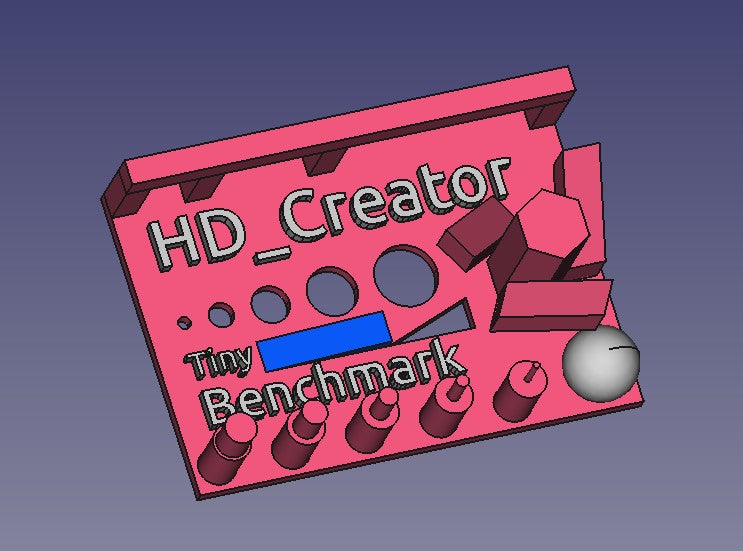
Tiny Benchmark (fast printing, tough on the details)
prusaprinters
<p>For me a benchmark is essentially for tuning my parameters, first of all my printing temperature. I can't have a benchmark that takes several hours to print, as I want to try different temperatures on all the different materials that I have, without getting old in the meanwhile. In order to see the difference, I need a benchmark that is really tough and unforgiving, up to basically impossible to print details. And I simply could not find such a design. That is the reason why I decided to create yet another benchmark thing, and here it is.</p> <p>This is a tiny benchmark for 3D printers that prints in about 30 minutes, depending on your settings. It has a bridging test for 4, 8 and 16mm, it has a stringing test between the pillars, it has small and ultra tiny 3D text, it has a little sphere, a very slowly rising surface, a 5mm hexagon to measure the dimension precision, it has holes of 1-5mm diameter, a triangle cutout with a steep angle and it has overhang tests of 45°, 40° and 35°.</p> <p>The first picture with the two red tiny benchmarks shows the difference it makes between the manufacturer recommended 215°C in the foreground and the upper limit of the specified range of 230°C in the background. There is significantly more stringing at 230°C. However, on the second picture with red prints, you can see on the backside around the triangle and around the round holes, that with the higher temperature (upper thing) the print material attaches much better to already printed strings. The red material is PLA from DasFilament.de, which I am really happy with in general.</p> <p>The picture with the white tiny benchmark was done at 215° with vanilla white PLA from Prusa. As much as I am fascinated by the print quality of the Prusa i3 Mk3S printer, this specific material does not get me excited. At the shown 215°C print temperature, the layer to layer adhesion is so bad, that part of the first layer stuck to the bed and ripped of from the rest of the part when I removed the part from the bed with a bit of force. At 230° (which is 5°C more than specified) this problem is solved, but then the stringing gets really a bit over the top.</p> <p>I'd be very glad to see some pictures here, especially since I am curious about your print results with different printers, materials and temperatures.</p> <h3>Print instructions</h3><p><strong>Printer Brand:</strong> Prusa</p> <p><strong>Printer:</strong> I3 MK3S</p> <p><strong>Rafts:</strong> No</p> <p><strong>Supports:</strong> No</p> <p><strong>Resolution:</strong> 0,15</p> <p><strong>Infill:</strong> 100%</p> <p><strong>Filament:</strong> DasFilament.de PLA Metallic red</p>
With this file you will be able to print Tiny Benchmark (fast printing, tough on the details) with your 3D printer. Click on the button and save the file on your computer to work, edit or customize your design. You can also find more 3D designs for printers on Tiny Benchmark (fast printing, tough on the details).
